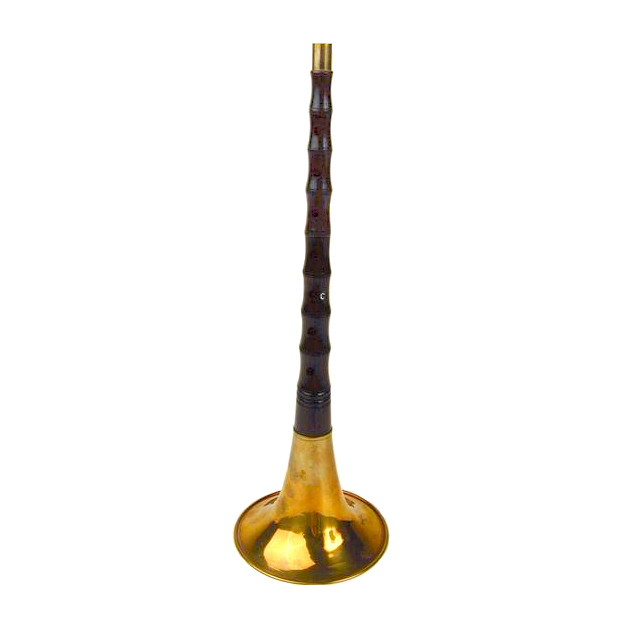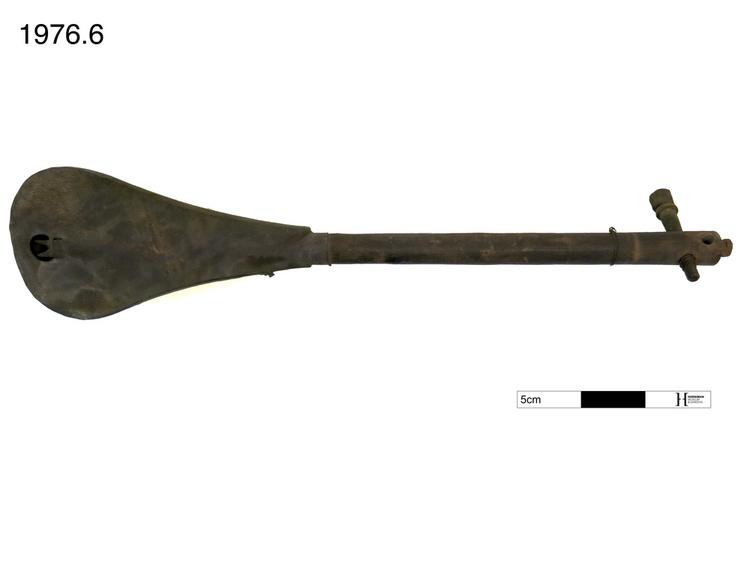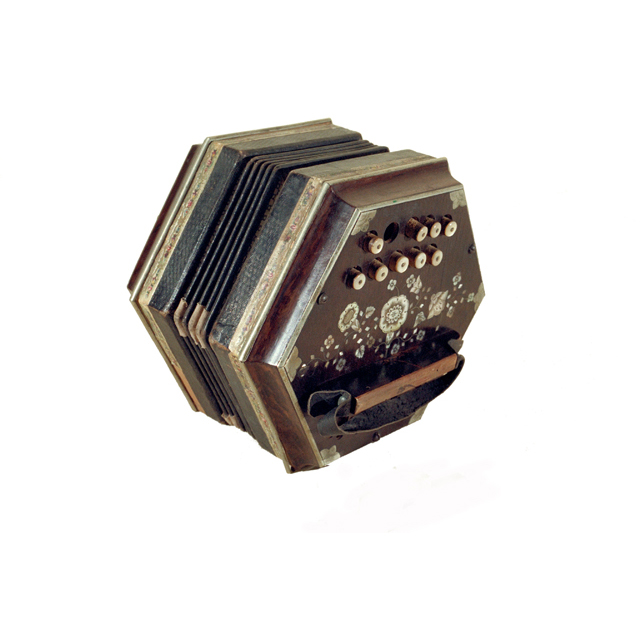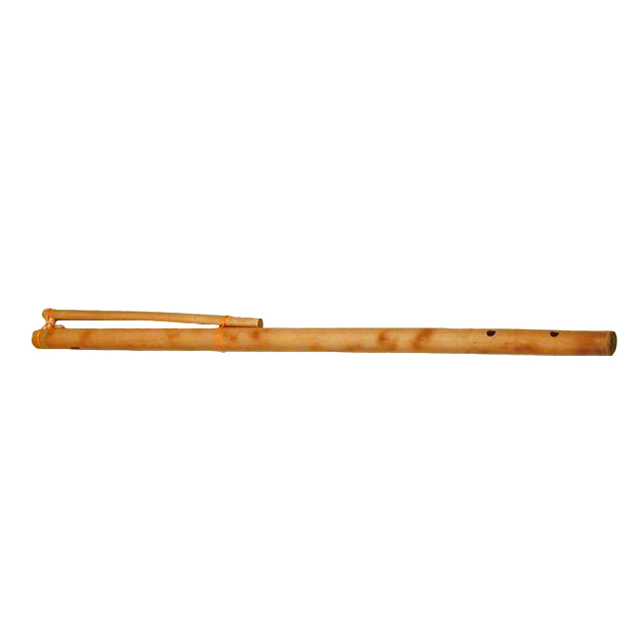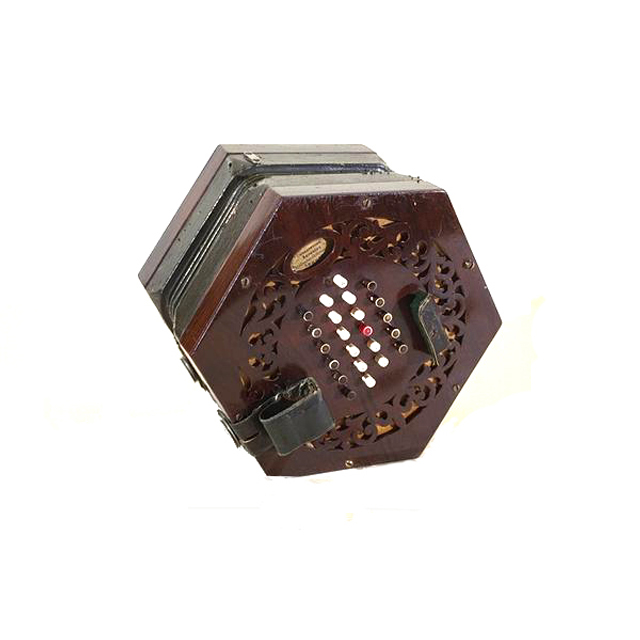
English system. Serial number 244. Oval paper label glued to pine backing, 'By His Majesty's Letters Patent, C. Wheatstone, Inventor, 20 Conduit St., Regent St., London.' 5 15/16" flat rosewood ends, with thickish simple fretwork, flush to action and inset into a cradle within the action frames. 48 ivory buttons, 23 each side: red Cs, white stamped natural notes, black accidentals. Green leather thumb straps (possibly original), and leather-clad curved finger rests (probably later replacements). Four-fold green leather bellows, with arabesque style papers. The bellows frames have three nickel clips affixed by blued steel screws, and have two star-shaped paper stickers applied. This instrument and serial number 1320 were purchased from Conduit Street by Mr AJ Ellis in November 1838 and September 1847 respectively. Both have these nickel bellows mounts, and no.1320 has a bellows paper marked 'Just', suggesting that Ellis was trying out instruments of various temperaments. Square-ended reed beds of unusually narrow and pointed form, with brass tongues. Both beds and pans are stamped with note names, and three reed chambers each end are now adjusted with cross pieces. The pan has a central hole, and is inset to a cradle in the bellows frame. The action has complex solid brass levers, which accommodate the buttons in a slit, and have pivots screwed to the action board. The levers are mounted with screwed blued-steel leaf springs. The bone pallets are screwed to the ends of the brass levers, and have note names stamped next to them on the action board. The action in this model has virtually no space between its pallets, some having been chamfered to allow them to fit, indicating that 46 buttons may have been the maximum number of keys that could be fitted into this small diameter instrument. The underside of the right-hand action is signed 'AJ Ellis, 4th Oct 1839'. Original hexagonal rosewood case, with traces of a large manuscript label in the lid.



